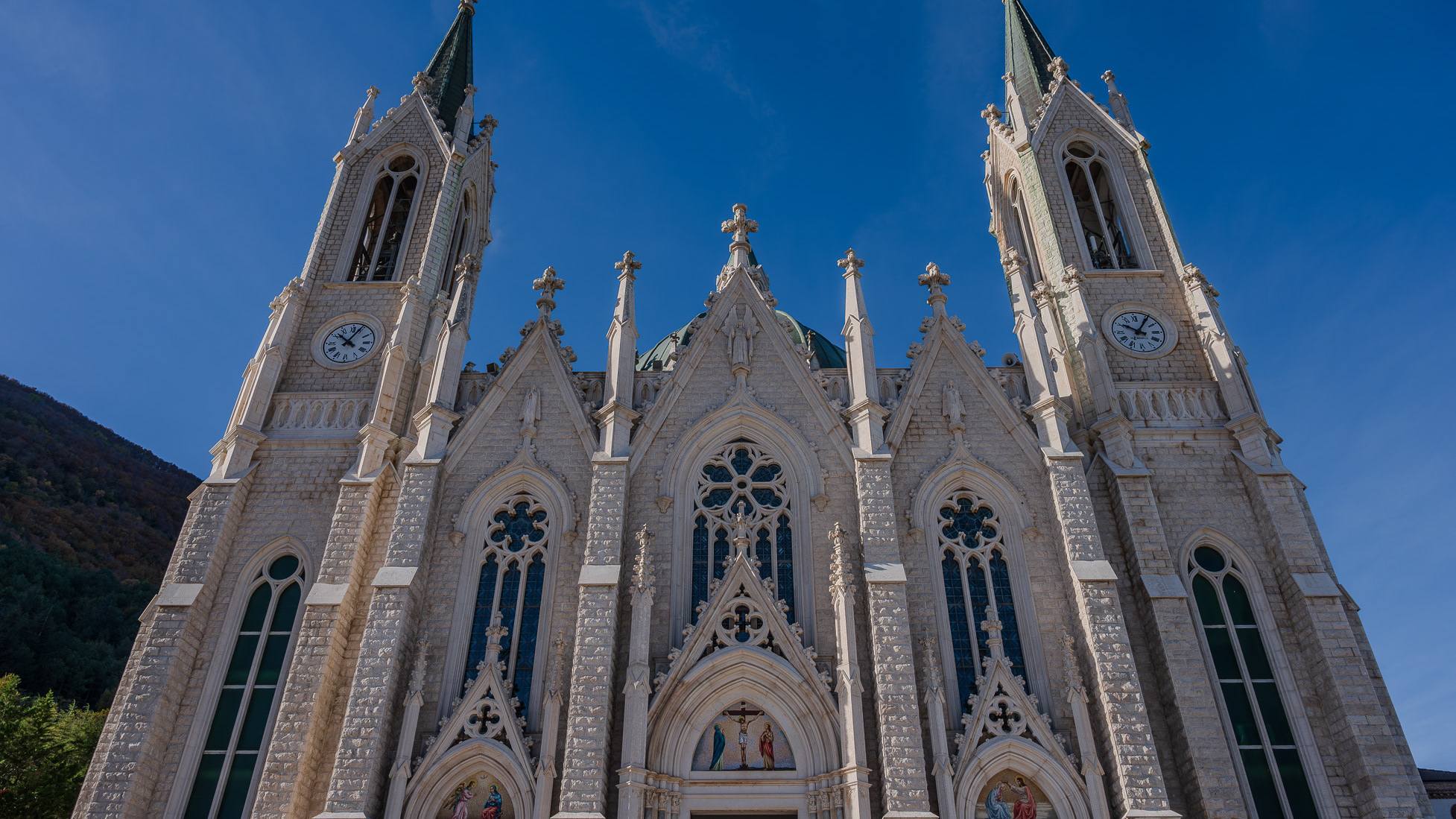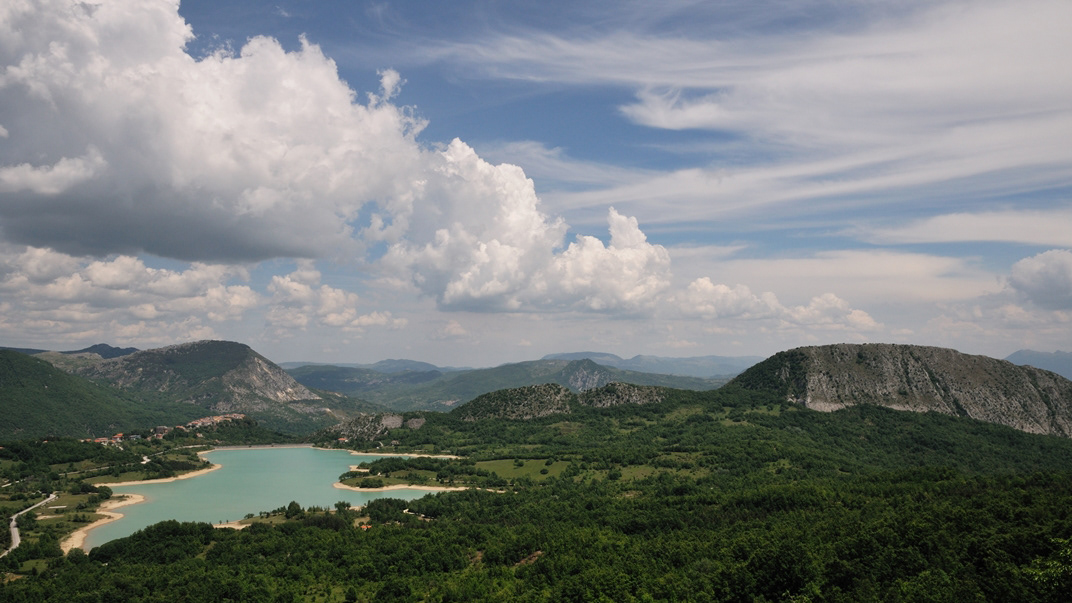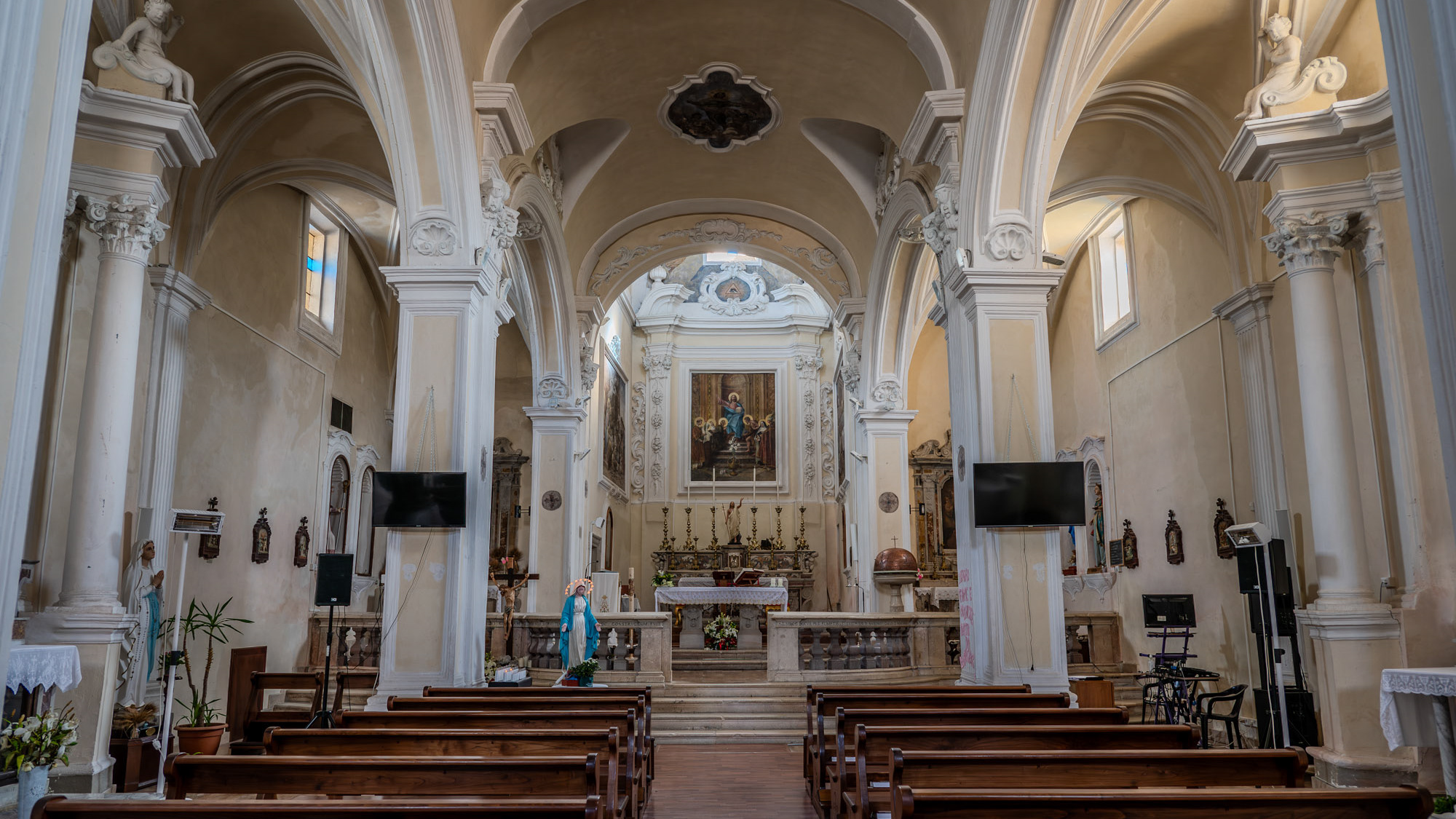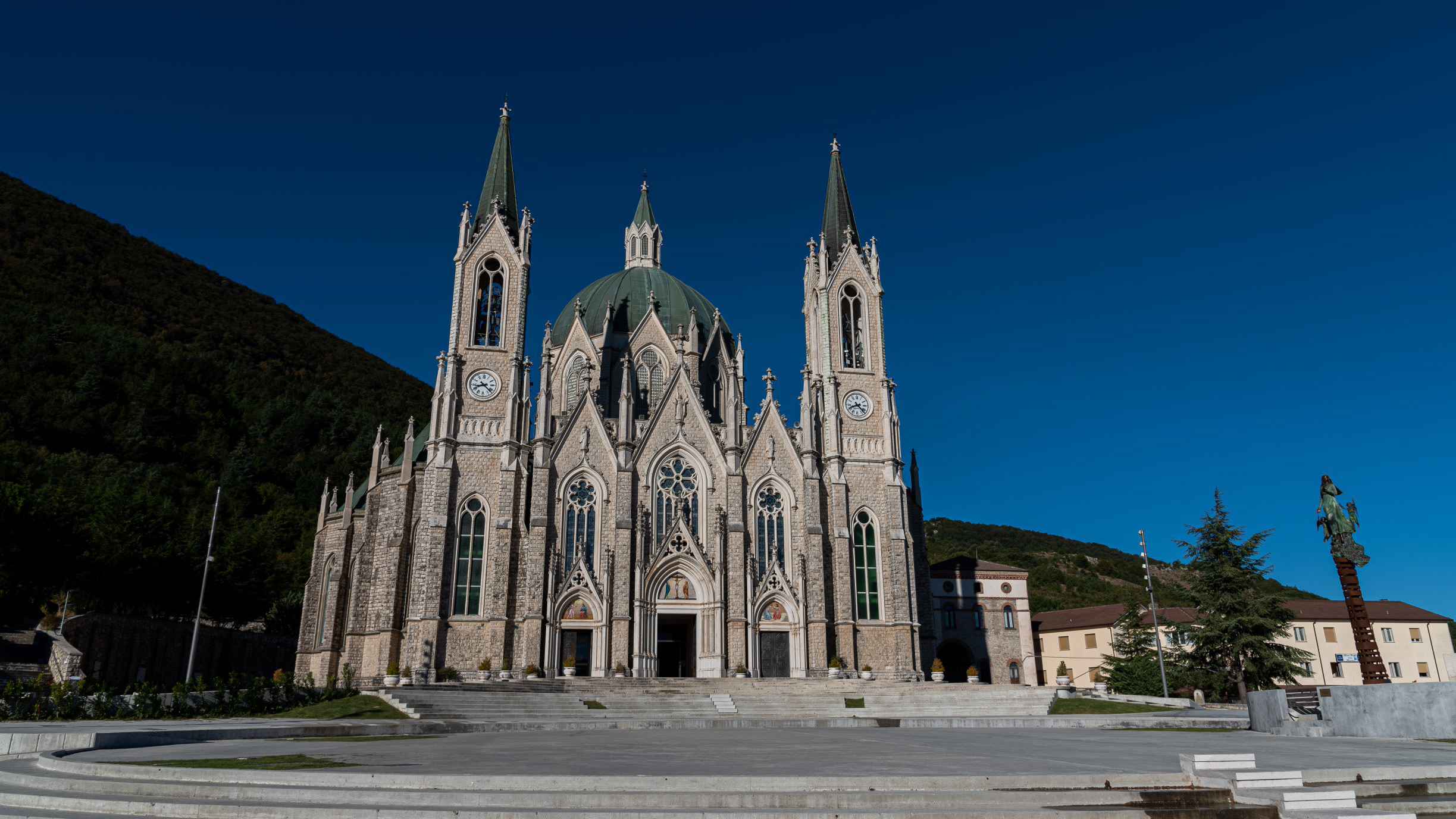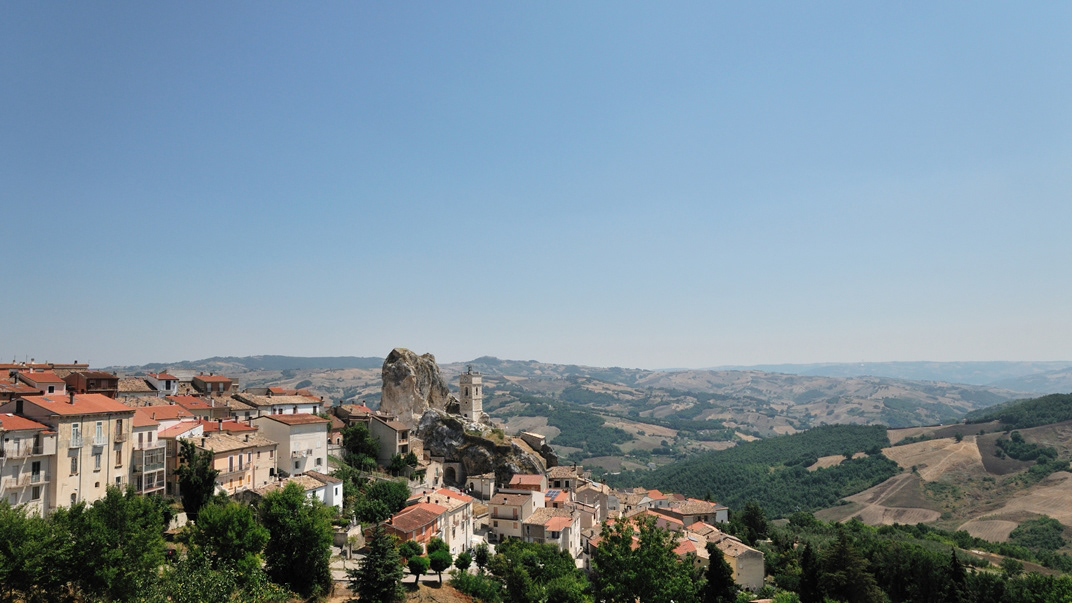Roccavivara (CB) Santuario della Madonna del Canneto
La chiesa giunta ai nostri giorni risale ai secoli XI-XII, ha pianta a croce latina, con tre absidi. La facciata non ha elementi decorativi rilevanti, se non un bassorilievo sulla lunetta del portale. Nei muri esterni della chiesa sono inserite lapidi e varie iscrizioni di epoca romana e medievale, mentre, sulla destra, si leva una possente campanile, ultimato nel 1329 ad opera dell'Abate Nicola, consistente in una torre merlata di stampo gotico con trifore sulle arcate. L'interno della chiesa è austero e a tre navate, ciascuna terminante con un'abside semicircolare. Lungo la navata centrale è collocato un pregevole ambone, finemente decorato, realizzato nel 1223, in parte con materiali di reimpiego più antichi. L’ambone è sostenuto da tre archi disuguali e, sotto il parapetto, si aprono sette piccole edicole: quella centrale doveva sostenere un’aquila che, con le sue ali spiegate, fungeva da leggio. Le altre sono occupate da sei monaci in altorilievo, intenti alle attività che rappresentano la regola monastica dell’ora et labora. Dietro l'altare maggiore è collocata la statua della Madonna di Canneto, risalente al XIV secolo, in stile gotico, e conosciuta anche come la Vergine del Sorriso. Nell’area adiacente la chiesa, sono presenti scavi archeologici che hanno riportato alla luce resti di una Villa romana del I secolo d.C.
You may also like


